It looks like you're using an Ad Blocker.
Please white-list or disable AboveTopSecret.com in your ad-blocking tool.
Thank you.
Some features of ATS will be disabled while you continue to use an ad-blocker.
share:
In the annual appreciation of cherry blossom and fall colours, Hanami and Momijigari, the Samurai philosophised that things are most splendid at the moment before their fall, and to aim to live and die in a similar fashion.
"The Way of the Samurai is, morning after morning, the practice of death, considering whether it will be here or be there, imagining the most sightly way of dying, and putting one's mind firmly in death. Although this may be a most difficult thing, if one will do it, it can be done. There is nothing that one should suppose cannot be done."
- Hagakure
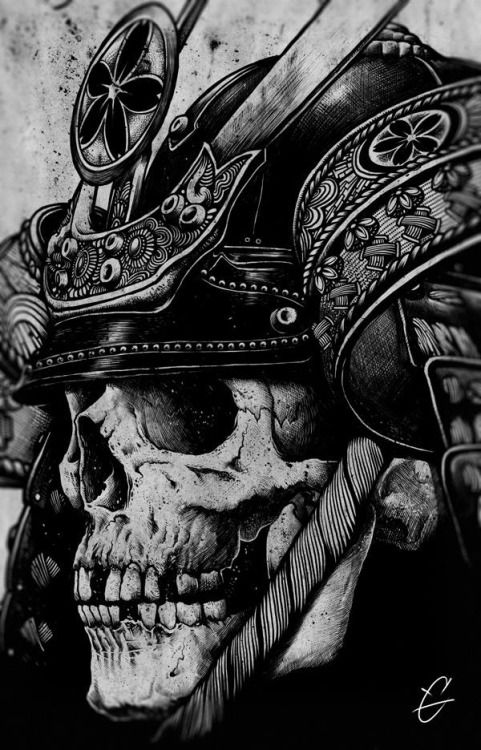

In Tibetan Buddhism, there is a mind training practice known as Lojong. The initial stages of the classic Lojong begin with 'The Four Thoughts that Turn the Mind', or, more literally, 'Four Contemplations to Cause a Revolution in the Mind'
-All compounded things are impermanent.
-The human body is a compounded thing.
-Therefore death of the body is certain.
-The time of death is uncertain and beyond our control.
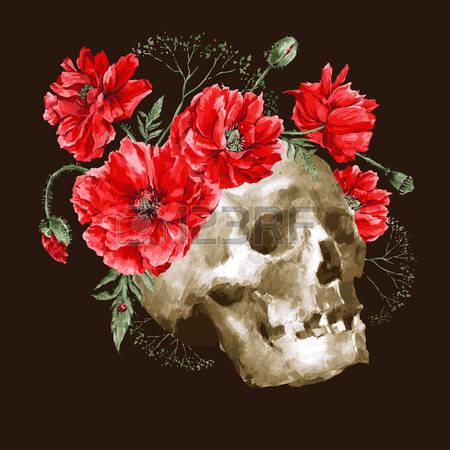
The following is from the Lalitavistara Sūtra, a major work in the classical Sanskrit canon:
The three worlds are fleeting like autumn clouds. Like a staged performance, beings come and go. In tumultuous waves, rushing by, like rapids over a cliff. Like lightning, wanderers in samsara burst into existence, and are gone in a flash.
Beings are ablaze with the sufferings of sickness and old age, And with no defence against the conflagration of Death The bewildered, seeking refuge in worldly existence Spin round and round, like bees trapped in a jar.

Shantideva, in the Bodhisattvacaryāvatāra'Bodhisattva's Way of Life' reflects at length:
Death does not differentiate between tasks done and undone. This traitor is not to be trusted by the healthy or the ill, for it is like an unexpected, great thunderbolt.
My enemies will not remain, nor will my friends remain. I shall not remain. Nothing will remain.
Whatever is experienced will fade to a memory. Like an experience in a dream, everything that has passed will not be seen again.
Day and night, a life span unceasingly diminishes, and there is no adding onto it. Shall I not die then?
For a person seized by the messengers of Death, what good is a relative and what good is a friend? At that time, merit alone is a protection, and I have not applied myself to it.


I'd like to thank The Most Dangerous Woman in the Universe for the tip off...

From their album Memento Mori....
Can you lend me a hand
Can you help me to see
Can you reconcile this war inside of me
Time is slipping away and I don't seem to mind
I'm missing something that I can't seem to define
Remember we die
But you're still alive so don't let go
Cause it's the only thing you know
There's plenty of time to see the other side
Remember we die
But until we arrive don't let go
Just let the light shine from your soul
Before we run out of time
Remember we die
Can you lend me your ears
I have something to say
I wanna care before it all just slips away
It's a cunning illusion
That time is on my side
I wanna feel before I have to say goodbye
Remember we die
But you're still alive so don't let go
Cause it's the only thing you know
There's plenty of time to see the other side
Remember we die
But until we arrive don't let go
Just let the light shine from your soul
Before we run out of time
Remember we die
I used to beg the Angels to carry me away
But as the sand drifts by I'm begging them to stay
Remember we die
But you're still alive so don't let go
Cause it's the only thing you know
There's plenty of time to see the other side
Remember we die
But until we arrive don't let go
Just let the light shine from your soul
Before we run out of time
Remember we die
Can you lend me a hand
Can you help me to see
Can you reconcile this war inside of me
Time is slipping away and I don't seem to mind
I'm missing something that I can't seem to define
Remember we die
But you're still alive so don't let go
Cause it's the only thing you know
There's plenty of time to see the other side
Remember we die
But until we arrive don't let go
Just let the light shine from your soul
Before we run out of time
Remember we die
Can you lend me your ears
I have something to say
I wanna care before it all just slips away
It's a cunning illusion
That time is on my side
I wanna feel before I have to say goodbye
Remember we die
But you're still alive so don't let go
Cause it's the only thing you know
There's plenty of time to see the other side
Remember we die
But until we arrive don't let go
Just let the light shine from your soul
Before we run out of time
Remember we die
I used to beg the Angels to carry me away
But as the sand drifts by I'm begging them to stay
Remember we die
But you're still alive so don't let go
Cause it's the only thing you know
There's plenty of time to see the other side
Remember we die
But until we arrive don't let go
Just let the light shine from your soul
Before we run out of time
Remember we die
So Academy student(s), that band I just linked, what is their symbol anyway?
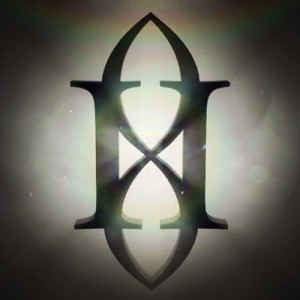
So it's like a Gemini II with the infinity 8 symbol right? Well let me show you something....


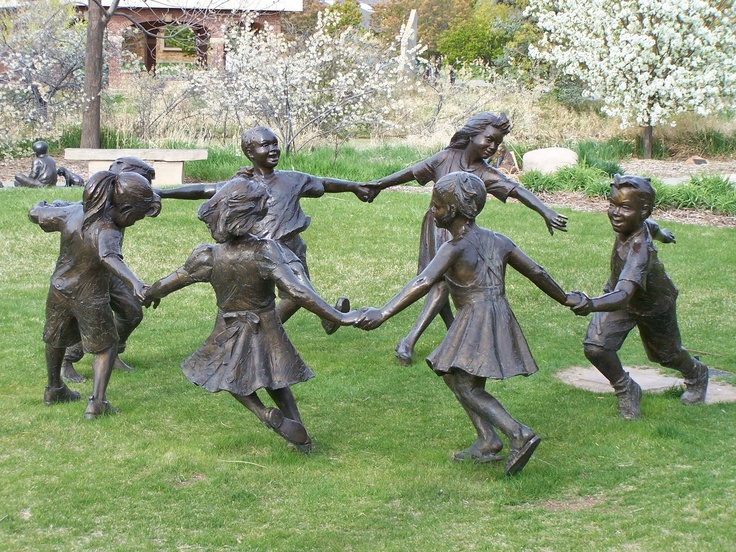
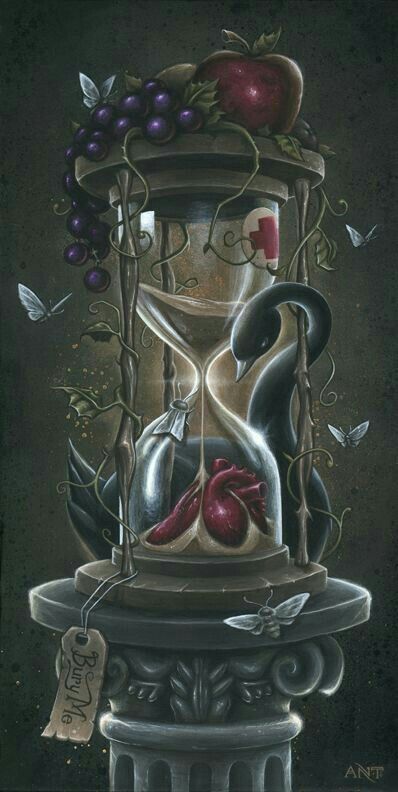

So it's like a Gemini II with the infinity 8 symbol right? Well let me show you something....




All your Castles.... Your Designs... Your Dreams...
Dorothy... Are you awake??

I close my eyes, only for a moment
And the moment's gone
All my dreams pass before my eyes, a curiosity
Dust in the wind
All they are is dust in the wind
Same old song, just a drop of water
In an endless sea
All we do crumbles to the ground
Though we refuse to see
Dust in the wind
All we are is dust in the wind
Now, don't hang on, nothing lasts forever but the earth and sky
It slips away, and all your money won't another minute buy
Dust in the wind
All we are is dust in the wind
All we are is dust in the wind
Dust in the wind
Everything is dust in the wind
Everything is dust in the wind
The wind

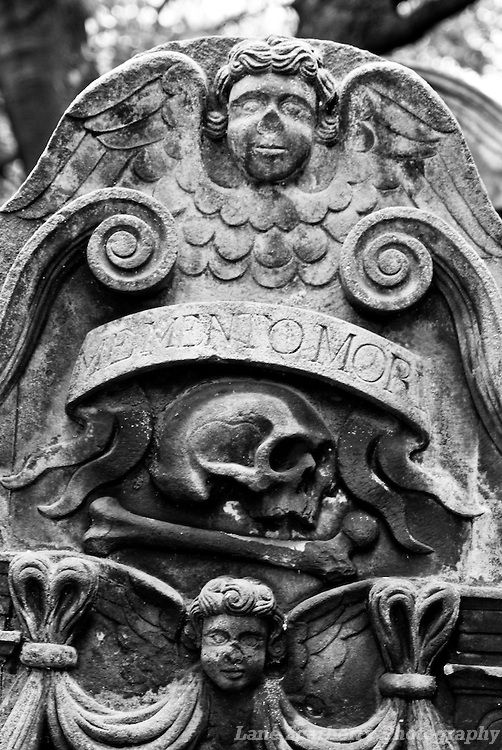
Dorothy... Are you awake??

I close my eyes, only for a moment
And the moment's gone
All my dreams pass before my eyes, a curiosity
Dust in the wind
All they are is dust in the wind
Same old song, just a drop of water
In an endless sea
All we do crumbles to the ground
Though we refuse to see
Dust in the wind
All we are is dust in the wind
Now, don't hang on, nothing lasts forever but the earth and sky
It slips away, and all your money won't another minute buy
Dust in the wind
All we are is dust in the wind
All we are is dust in the wind
Dust in the wind
Everything is dust in the wind
Everything is dust in the wind
The wind


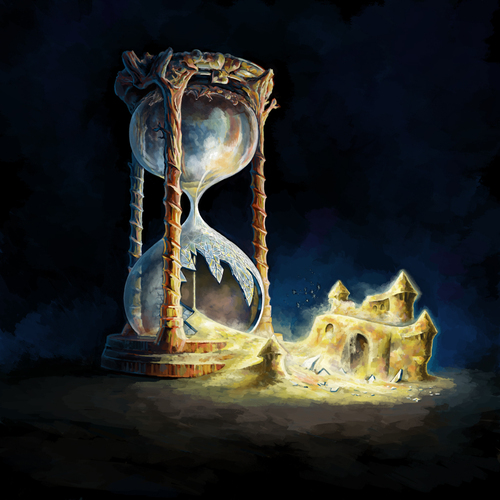

Ya so what's that about? Epona's Epoch?

Saint Pega
She lived as an anchoress at what is now Peakirk ("Pega's church") near Peterborough, not far from Guthlac's hermitage at Crowland.
It is said that her heart was returned to Peakirk and was kept as a relic in the church, contained in a heart stone
Peakirk? Crowland?
I'm not makin it up...
Anyways, it's late. I'm tired...
I'm skippin ahead of all my notes too.
Keep doin that... lol
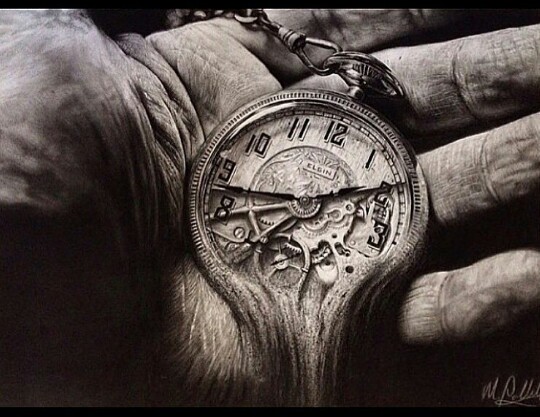
edit on 6/8/2018 by muzzleflash because: (no reason given)
Ok back to the Memento Mori wiki section on Tibetan Buddhism, where it mentions Lojong:
So the goal is to move towards Bodhicitta
So actually me posting all of these sayings/aphorisms/maxims isn't just some meaningless approach, it's a tried and true approach to improving the mental health and life experience of anyone who is willing to read them and attempt to change their thinking.
Now if you go back to the Lojong wiki it will show a list of the 59 slogans. What I'm doing here in this thread (and several other threads I write to inspire and enlighten others) is I expand this to hundreds if not thousands of sayings and slogans. We humans have it as our essential nature to gravitate towards mantras, buzz words, slogans, etc. Many of these become trite over time but I think we need to examine them closer and from that, promote thinking and development within ourselves because many of them are indeed pithy and contain valid wisdom.
Ok so Slogan 1 is the Reminders:
Check this out:
The #2 point is to regard all "dharmas (the bare phenomena that constitute the world around us)" as "Dreams". That is, that they are neither real nor not-real, but instead that they are UNREAL!
Imagine how I wake up to experiences when I shout "Omg this is UNREAL!!!!" as if I were having that "Eureka!" moment finally understanding what I am going through. Change is a constant, the world as it is now is maya, the elusive illusion.
Ok so Alaya is referring to the theory of The Eight Consciousnesses
Alaya means "All-encompassing foundation" or "Base" consciousness. That is, all other 7 forms of consciousness *your senses and your mental delusions* emerge from this foundation consciousness (alaya). The other 7 are transforming and morphological, they are transient and temporary, they are illusion. But, on the other hand, the foundation itself is real.
To "rest in the nature of your base self, your very essence" is to just BE. To allow, to accept, to take the initiative of the present moment and utilize all that is to achieve your goals, etc. To BE you and seize the day.
What does it mean to "Be a Child of Illusion" though? Let's check some advice from those who are well versed in the practice of Lojong Mind-Training for their take on it... Tricycle
Ok so being a child of illusion happens when you're going about your normal daily routines and doing whatever it is you do.
So therefore Balance is key, as always.
So the gist of this is that we need to play and have fun, to not get too wrapped up in the drama and seriousness of everything - though sometimes that is necessary and adequate because all of these things form our lifetime of experiences and teach us what it means to be a human and how to grow as one into something far greater than ourselves.
Be a child, be curious, explore, experiment, find what it is you seek.
We must get in touch with our inner child if we are to ever hope to manifest our Dreams.
Lojong (Tib. བློ་སྦྱོང་,Wylie: blo sbyong) is a mind training practice in the Tibetan Buddhist tradition based on a set of aphorisms formulated in Tibet in the 12th century by Chekawa Yeshe Dorje. The practice involves refining and purifying one's motivations and attitudes.
The fifty-nine or so slogans that form the root text of the mind training practice are designed as a set of antidotes to undesired mental habits that cause suffering. They contain both methods to expand one's viewpoint towards absolute bodhicitta, such as "Find the consciousness you had before you were born" and "Treat everything you perceive as a dream", and methods for relating to the world in a more constructive way with relative bodhicitta, such as "Be grateful to everyone" and "When everything goes wrong, treat disaster as a way to wake up."
So the goal is to move towards Bodhicitta
In Buddhism, bodhicitta,[a] "enlightenment-mind", is the mind that strives toward awakening, empathy, and compassion for the benefit of all sentient beings.[1]
So actually me posting all of these sayings/aphorisms/maxims isn't just some meaningless approach, it's a tried and true approach to improving the mental health and life experience of anyone who is willing to read them and attempt to change their thinking.
Bodhicitta is a spontaneous wish to attain enlightenment motivated by great compassion for all sentient beings, accompanied by a falling away of the attachment to the illusion of an inherently existing self.[3]
The mind of great compassion and bodhicitta motivates one to attain enlightenment Buddhahood, as quickly as possible and benefit infinite sentient beings through their emanations and other skillful means.
Bodhicitta is a felt need to replace others' suffering with bliss. Since the ultimate end of suffering is nirvana, bodhicitta necessarily involves a motivation to help others to awaken (to find bodhi).[3]
A person who has a spontaneous realization or motivation of bodhicitta is called a bodhisattva.
In Mahāyāna and Vajrayāna Buddhism, the goal of Buddhist practice is primarily to be reborn infinite numbers of times to liberate all those other beings still trapped in samsāra.
Now if you go back to the Lojong wiki it will show a list of the 59 slogans. What I'm doing here in this thread (and several other threads I write to inspire and enlighten others) is I expand this to hundreds if not thousands of sayings and slogans. We humans have it as our essential nature to gravitate towards mantras, buzz words, slogans, etc. Many of these become trite over time but I think we need to examine them closer and from that, promote thinking and development within ourselves because many of them are indeed pithy and contain valid wisdom.
Ok so Slogan 1 is the Reminders:
Slogan 1. First, train in the preliminaries; The four reminders.[9] or alternatively called the Four Thoughts[10]
1. Maintain an awareness of the preciousness of human life.
2. Be aware of the reality that life ends; death comes for everyone; Impermanence.
3. Recall that whatever you do, whether virtuous or not, has a result; Karma.
4. Contemplate that as long as you are too focused on self-importance and too caught up in thinking about how you are good or bad, you will experience suffering. Obsessing about getting what you want and avoiding what you don't want does not result in happiness; Ego.
Check this out:
Slogan 2. Regard all dharmas as dreams; although experiences may seem solid, they are passing memories.
The #2 point is to regard all "dharmas (the bare phenomena that constitute the world around us)" as "Dreams". That is, that they are neither real nor not-real, but instead that they are UNREAL!
Imagine how I wake up to experiences when I shout "Omg this is UNREAL!!!!" as if I were having that "Eureka!" moment finally understanding what I am going through. Change is a constant, the world as it is now is maya, the elusive illusion.
Slogan 5. Rest in the nature of alaya, the essence, the present moment.
Slogan 6. In postmeditation, be a child of illusion.
Ok so Alaya is referring to the theory of The Eight Consciousnesses
Alaya means "All-encompassing foundation" or "Base" consciousness. That is, all other 7 forms of consciousness *your senses and your mental delusions* emerge from this foundation consciousness (alaya). The other 7 are transforming and morphological, they are transient and temporary, they are illusion. But, on the other hand, the foundation itself is real.
To "rest in the nature of your base self, your very essence" is to just BE. To allow, to accept, to take the initiative of the present moment and utilize all that is to achieve your goals, etc. To BE you and seize the day.
What does it mean to "Be a Child of Illusion" though? Let's check some advice from those who are well versed in the practice of Lojong Mind-Training for their take on it... Tricycle
Practice can be divided into two: meditation and postmeditation. Meditation refers to time spent in formal practices such as mindfulness-awareness, and postmeditation refers to what we do the rest of the time. The notion of practice, of being a spiritual practitioner, includes both meditation and postmeditation, which means that practice applies both on and of the meditation cushion.”
Ok so being a child of illusion happens when you're going about your normal daily routines and doing whatever it is you do.
Once you embark on the meditative path, once you are called a practitioner, everything you do should be seen as practice. The problem is that this could be taken in a very heavy-handed way, which would cloud ordinary activities with a pall of earnestness. It could be taken in an overly precious way, in which everything takes on deep import and a quality of icky religiosity. The trick is to maintain an attitude of practice and at the same time be light and ordinary.
So therefore Balance is key, as always.
In this slogan, the particular postmeditation practice is to “be a child of illusion.” It is to play within an environment that we recognize to be shifty and illusory. So rather than trying to make our world solid and predictable, and complaining when that is not the case, we could maintain the glimpses of the illusory nature of experience that arise in meditation practice, and touch in with that open illusory quality in the midst of our daily activities. That looser more open quality is the ground on which the compassionate actions of the bodhisattva can arise.
So the gist of this is that we need to play and have fun, to not get too wrapped up in the drama and seriousness of everything - though sometimes that is necessary and adequate because all of these things form our lifetime of experiences and teach us what it means to be a human and how to grow as one into something far greater than ourselves.
Be a child, be curious, explore, experiment, find what it is you seek.
We must get in touch with our inner child if we are to ever hope to manifest our Dreams.
Slogan 9. In all activities, train with slogans.
Here in the Academy we train with slogans (among many other methods).
I personally did not know about Lojong until the last few days in any detail, but I was able to emulate it unknowingly by nature because I understood the fundamental nature of myself - Alaya - instinctively.
I recognized that deep within myself, at the very core of my consciousness, resides the singularity of all consciousness and the foundation of all existence = "Spirit" itself. In that singularity of Spirit all knowledge and understanding and methodology or science or whatever resides. All of it, from the depths of ancient times to the far reaches of space in the future worlds.
It is all there within you. All knowledge, all understanding.
The problem is that our ego has been trained by our modern systems to avoid this Alaya and instead to rely on the delusions instead. We are taught to believe that this material world around us is "Real", and that our Imagination and our Dreams are "Not Real".
My reaction is to shift the sands and to posit that this is all UNREAL.
And I use that term specifically because it has three interesting meanings forming a bridge between our concepts of reality, one on hand UNREAL means 'imaginary, mythical, fantasy, dreamed-up, make-believe' --- but it also can mean hypothetical or theoretical, as in, "it seems it should be and I expect it to be so, but I'm not fully sure it is so yet".
Then of course UNREAL also means "incredible, amazing, fantastic, out of this world, mind blowing".
So thus forms the bridge between the real and that which is not real, it is UNREAL. It is when you finally awaken to the Truth of who you are in this existence, the absolute impossibility of this marvelous illusion and yet it is apparent around us. The birds the trees the clouds the stars, the fact you must eat and drink, the people you know and the life you have been given to live.
It is UNREAL!!
There are various other reasons I chose the terminology, one of which was so that I could tap into a treasure trove of excellent graphics and quotes as I wade through the exploration...
I wanted to talk about

and wake you up to the
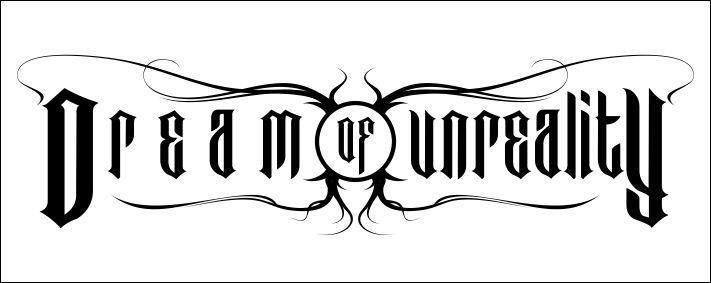
I'm just a child of the illusion, what do you expect? Hahah!

Why thank you. I like the Unreality of you too!

Hmmmm, yeah that's probably pretty close to the truth.
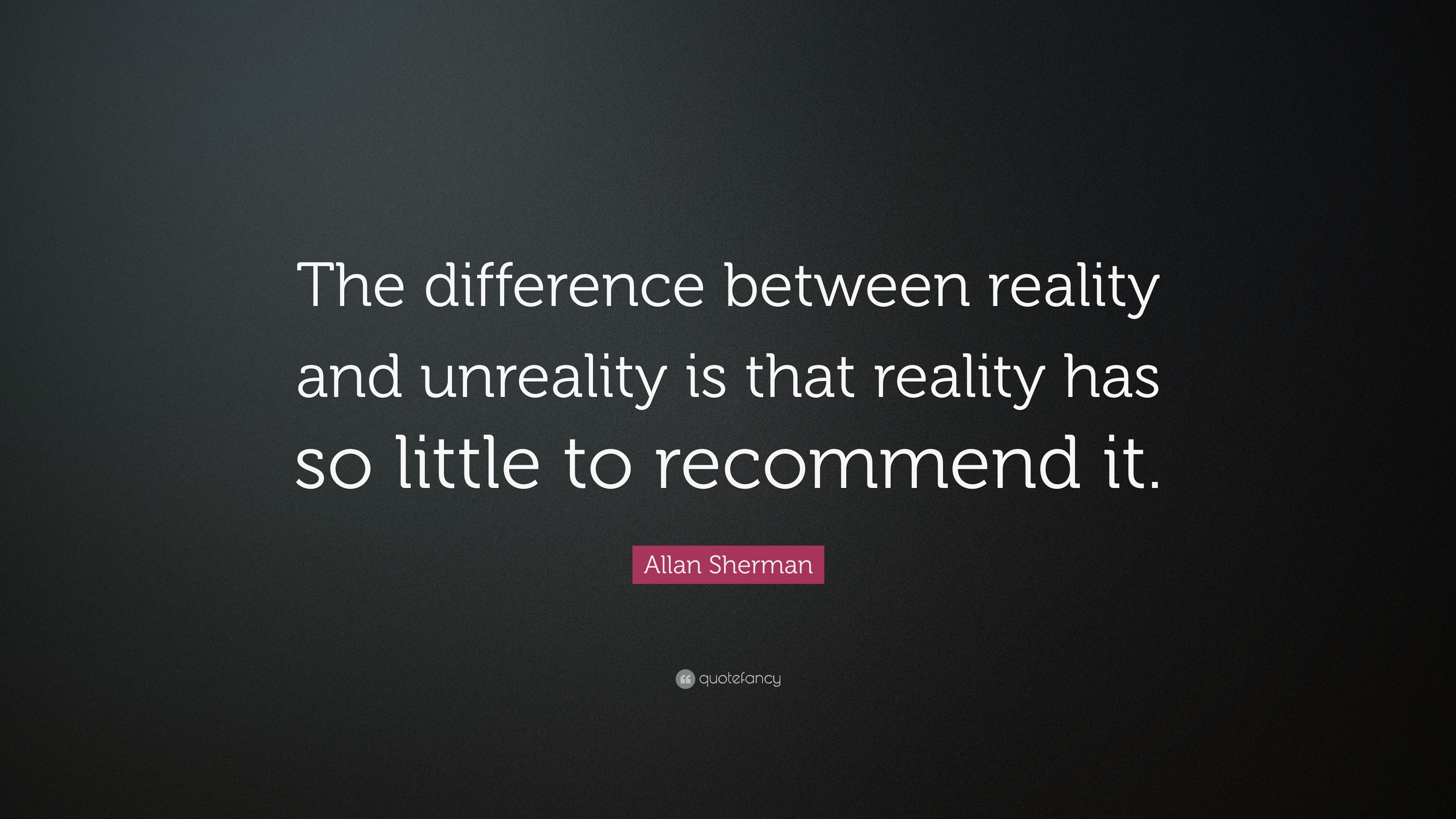
Well I'm here to recommend to everyone we just dive into this

Slogan 11. When the world is filled with evil, transform all mishaps into the path of bodhi.
So when things go wrong, and my Heart is shattered and broken to pieces, my life is ruined and I feel like it's all over or there's no way to make it better -
I must transform this experience into Bodhi - My Awakening.
The Epiphany of Realization of my own Nature and of the Nature of this Universe.
My Discovery of God.
Slogan 12. Drive all blames into one
Instead of Blaming this and Blaming that, I'll just Blame ME.
Finally we have arrived at the Root Cause.
Slogan 13. Be grateful to everyone.
Thank all of you. I appreciate all of you so much.
Slogan 17. Practice the five strengths, the condensed heart instructions. The 5 strengths are: strong determination, familiarization, the positive seed, reproach, and aspiration.
Slogan 18. The mahayana instruction for ejection of consciousness at death is the five strengths: how you conduct yourself is important. When you are dying practice the 5 strengths.
I think those are interesting, because they are so incredibly difficult to work through and experience. But if you allow those experiences to occur they will progress naturally.
Slogan 20. Of the two witnesses, hold the principal one -- You know yourself better than anyone else knows you
You know You better than anyone - so Trust in yourself when things get difficult and you are forced to make the decision.
Slogan 22. If you can practice even when distracted, you are well trained.
I agree. Practice will create automatic reactions and make the ride much smoother. There are TONS of distractions in today's world.
Slogan 23. Always abide by the three basic principles -- Dedication to your practice, refraining from outrageous conduct, developing patience.
That is NOT easy to do.
Slogan 24. Change your attitude, but remain natural.-- Reduce ego clinging, but be yourself.
I really like that one.
Slogan 25. Don't talk about injured limbs -- Don't take pleasure contemplating others' defects.
Slogan 26. Don't ponder others -- Don't take pleasure contemplating others' weaknesses.
Slogan 27. Work with the greatest defilements first -- Work with your greatest obstacles first.
These are really good points, and I struggle with some of them as do any of us...
Slogan 28. Abandon any hope of fruition -- Don't get caught up in how you will be in the future, stay in the present moment.
Slogan 29. Abandon poisonous food.
Slogan 30. Don't be so predictable -- Don't hold grudges.
Slogan 31. Don't malign others.
Slogan 32. Don't wait in ambush -- Don't wait for others' weaknesses to show to attack them.
Slogan 33. Don't bring things to a painful point -- Don't humiliate others.
Slogan 34. Don't transfer the ox's load to the cow -- Take responsibility for yourself.
Slogan 35. Don't try to be the fastest -- Don't compete with others.
Slogan 36. Don't act with a twist -- Do good deeds without scheming about benefiting yourself.
Slogan 37. Don't turn gods into demons -- Don't use these slogans or your spirituality to increase your self-absorption Slogan 38. Don't seek others' pain as the limbs of your own happiness.
Hmmmm running outta time to post...
Slogan 54. Train wholeheartedly.
Slogan 55. Liberate yourself by examining and analyzing: Know your own mind with honesty and fearlessness.
Slogan 56. Don't wallow in self-pity.
Slogan 57. Don't be jealous.
Slogan 58. Don't be frivolous.
Slogan 59. Don't expect applause.
I'll try my best.
I see

My vision is obscured by
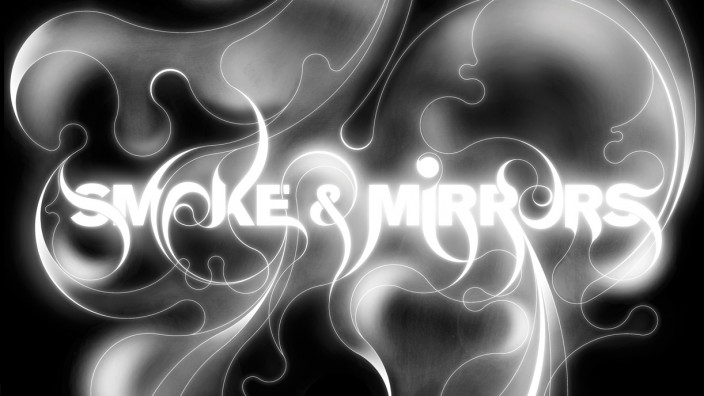
I am trapped in my own Delusions and Fantasies...
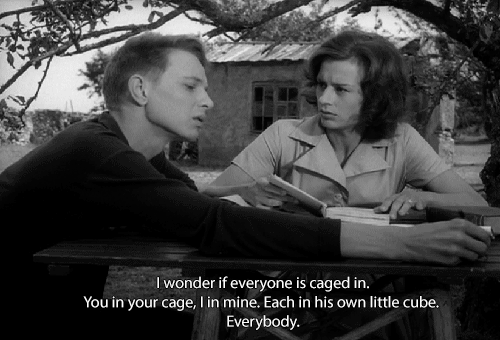
But therein lies my

Allegory of the Cave
We just can't see the big picture. Everything you think is True, probably isn't.
That's the point of this whole thread.
The only Reality is the Spirit! It's Unreal!
Now I am
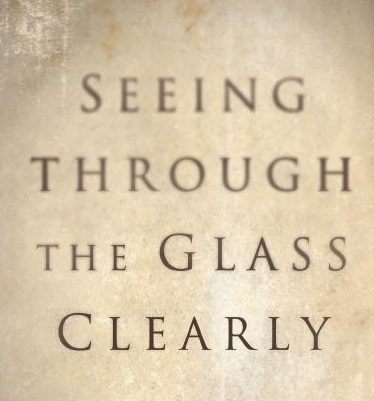
and these are our
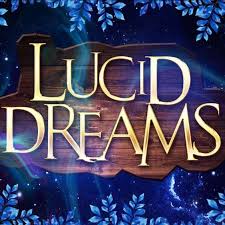
of
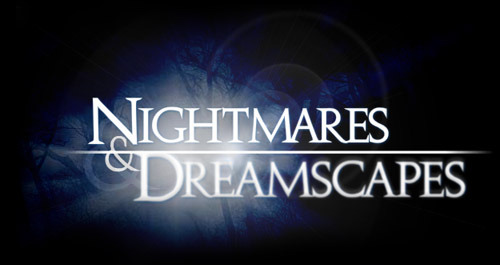
where everything is not what it seems, it's all made of
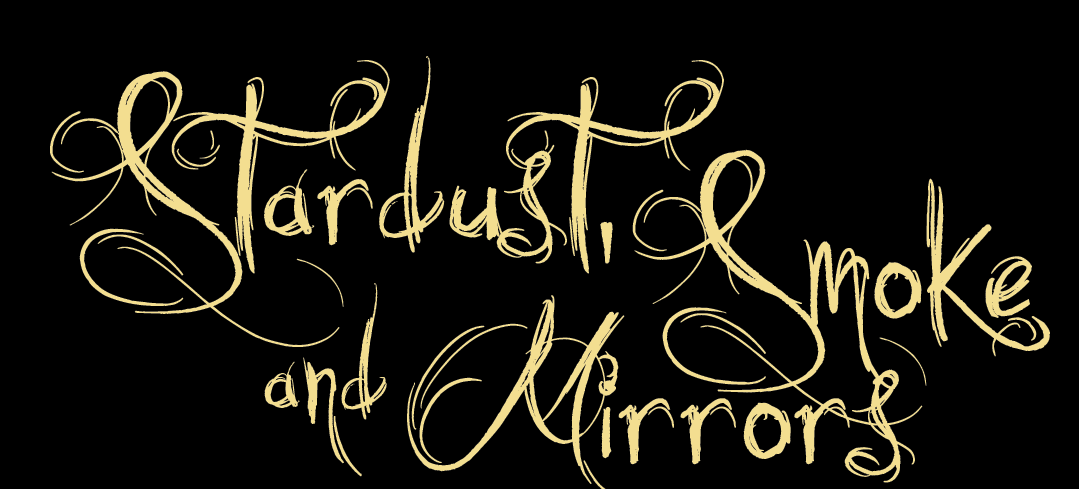
You see...
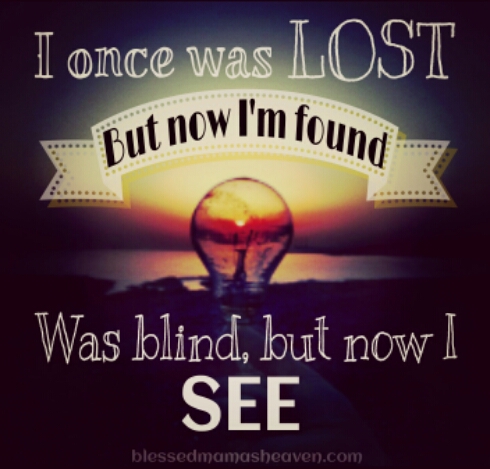

My vision is obscured by

I am trapped in my own Delusions and Fantasies...

But therein lies my

Allegory of the Cave
Plato has Socrates describe a group of people who have lived chained to the wall of a cave all of their lives, facing a blank wall. The people watch shadows projected on the wall from objects passing in front of a fire behind them, and give names to these shadows. The shadows are the prisoners' reality.
Socrates explains how the philosopher is like a prisoner who is freed from the cave and comes to understand that the shadows on the wall are not reality at all, for he can perceive the true form of reality rather than the manufactured reality that is the shadows seen by the prisoners.
The inmates of this place do not even desire to leave their prison, for they know no better life. The prisoners manage to break their bonds one day, and discover that their reality was not what they thought it was.
They discovered the sun, which Plato uses as an analogy for the fire that man cannot see behind. Like the fire that cast light on the walls of the cave, the human condition is forever bound to the impressions that are received through the senses.
Even if these interpretations (or, in Kantian terminology, intuitions) are an absurd misrepresentation of reality, we cannot somehow break free from the bonds of our human condition - we cannot free ourselves from phenomenal state just as the prisoners could not free themselves from their chains.
If, however, we were to miraculously escape our bondage, we would find a world that we could not understand - the sun is incomprehensible for someone who has never seen it.
In other words, we would encounter another "realm," a place incomprehensible because, theoretically, it is the source of a higher reality than the one we have always known; it is the realm of pure Form, pure fact.
We just can't see the big picture. Everything you think is True, probably isn't.
That's the point of this whole thread.
The allegory contains many forms of symbolism used to describe the state of the world. The cave is a symbol of the world and the prisoners are those who inhabit the world. The chains that prevent the prisoners from leaving the cave represent ignorance, meaning they interfere with the prisoners seeing the truth. The shadows cast on the walls of the cave represent what people see in the present world.
Last, the freed prisoner represents those in society who see the physical world for the illusion that it is.
The only Reality is the Spirit! It's Unreal!
Now I am

and these are our

of

where everything is not what it seems, it's all made of

You see...

The allegory is probably related to Plato's theory of Forms, according to which the "Forms" (or "Ideas"), and not the material world known to us through sensation, possess the highest and most fundamental kind of reality.
Only knowledge of the Forms constitutes real knowledge or what Socrates considers "the good".[6] Socrates informs Glaucon that the most excellent people must follow the highest of all studies, which is to behold the Good.
Those who have ascended to this highest level, however, must not remain there but must return to the cave and dwell with the prisoners, sharing in their labors and honors.
The theory of Forms or theory of Ideas[1][2][3] is Plato's argument that non-physical (but substantial) forms (or ideas) represent the most accurate reality.
the term εἶδος (eidos), "visible form", and related terms μορφή (morphē), "shape",[8] and φαινόμενα (phainomena), "appearances", from φαίνω (phainō), "shine",
No one has ever seen a perfect circle, nor a perfectly straight line, yet everyone knows what a circle and a straight line are.
So the Form is the Essence, the Spirit underlying everything that manifests as a variation of it. So the idea of Love is the highest ideal, but no physical manifestation of Love will ever reach it's glory or depth.

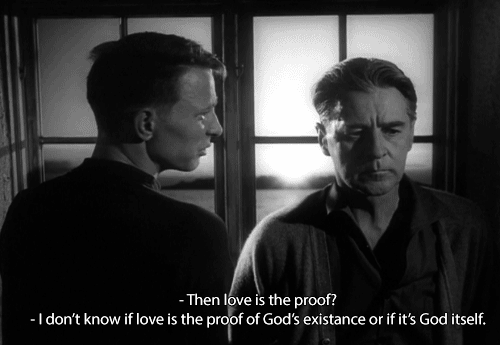
Life is simple for me when I really get to the bottom of things.
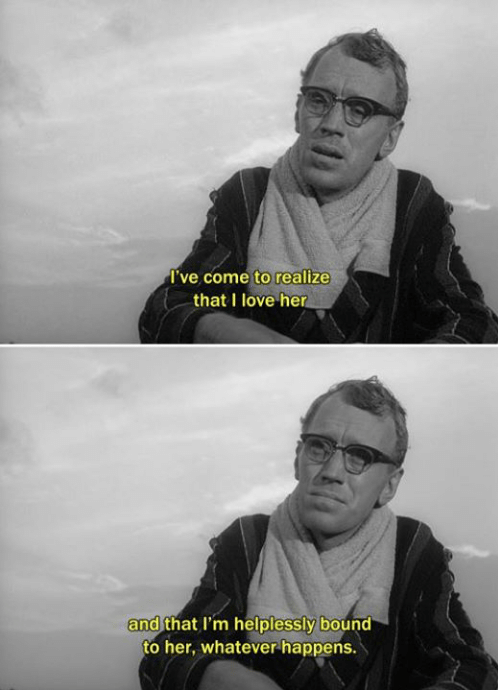

So keep that in mind when you think about me...
Wipe the mist of your breath off the mirror and tell me what you see?
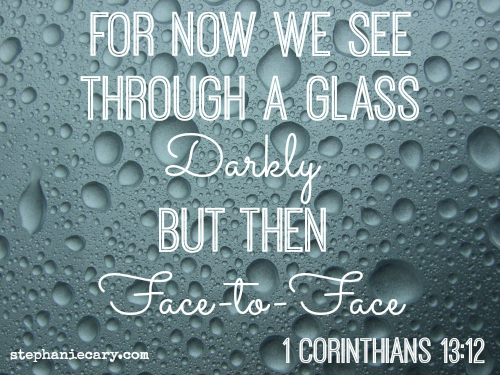
What inspired the last two posts was actually two totally separate people said Jeremiah 29 11-13 within a few hours, a guy at the gas station and a
guy from across town at different area.
I was like huh??
I don't hear ppl quote a verse on a daily basis in public then for it to be the same one?
That's ominous.
So I looked up omen and coincidence, synchronicity, synchromysticism, etc.
It's all the same stuff, parapsychology, delusion, divination, covens and cults, art and literature and history.
I'm very concerned and a lil nervous. Maybe terrified lol. I have no idea what to make of that omen.
I was like huh??
I don't hear ppl quote a verse on a daily basis in public then for it to be the same one?
That's ominous.
So I looked up omen and coincidence, synchronicity, synchromysticism, etc.
It's all the same stuff, parapsychology, delusion, divination, covens and cults, art and literature and history.
I'm very concerned and a lil nervous. Maybe terrified lol. I have no idea what to make of that omen.
Mahakala
His name means "Great Time/Death".
In many ways we can consider this a close equivalent to Shiva.
So it is a lot like our western ideas of the Grim Reaper, Saturn/Kronos, etc.
Now to connect this back into the many philosophical concepts throughout this thread:
Nirguna - Para Brahman
I won't go into Kali much right now so what I'm going to skip to is Adi Parashakti:
I realize that Eastern religions (especially Hinduism) can become really complex and because there are so many differing sects that it can become an endless stream of variations of the same thing. However I think that it's worth mentioning and that it's worth looking into at least for general knowledge about what people around the world think/believe.
is a deity common to Hinduism, Buddhism and Sikhism. According to Hinduism, Mahakala is the consort of Hindu Goddess Kali and most prominently appears in Kalikula sect of Shaktism.
In Sikhism, Mahākāla is referred to as Kal, who is the governor of Maya.
His name means "Great Time/Death".
In many ways we can consider this a close equivalent to Shiva.
According to Shaktisamgama Tantra, the spouse of Kali is extremely frightening. Mahakala has four arms, three eyes and is of the brilliance of 10 million black fires of dissolution, dwells in the midst of eight cremation grounds. He is adorned with eight skulls, seated on five corpses, holds a trident, a drum, a sword and a scythe in his hands. He is adorned with ashes from the cremation ground and surrounded by numbers of loudly shrieking vultures and jackals. Among his side is his consort Kali and they both represent the flow of time.
Both Mahakala and Kali/Mahakali represent the ultimate destructive power of Brahman and they are not bounded by any rules or regulations. They have the power to dissolve even time and space into themselves and exist as Void at the dissolution of the universe. They are responsible for the dissolution of the universe at the end of Kalpa. They are also responsible for annihilating great evils and great daemons when other gods, Devas and even Trimurtis fail to do so.
Mahakala and Kali annihilates men, women, children, animals, the world and the entire universe without mercy because they are Kala or Time in the personified form and Time is not bound by anything and Time does not show mercy, nor does it wait for anything or anyone.
So it is a lot like our western ideas of the Grim Reaper, Saturn/Kronos, etc.
Now to connect this back into the many philosophical concepts throughout this thread:
Mahakala is typically black in color. Just as all colors are absorbed and dissolved into black, all names and forms are said to melt into those of Mahakala, symbolizing his all-embracing, comprehensive nature. Black can also represent the total absence of color, and again in this case it signifies the nature of Mahakala as ultimate or absolute reality. This principle is known in Sanskrit as "nirguna", beyond all quality and form, and it is typified by both interpretations
Nirguna - Para Brahman
is the "Highest Brahman" that which is beyond all descriptions and conceptualisations. It is described in Hindu texts as the formless (in the sense that it is devoid of Maya) spirit (soul) that eternally pervades everything, everywhere in the universe and whatever is beyond.
Advaita Vedanta non-dualistically holds that Brahman is divine, the Divine is Brahman, and this is identical to that which is Atman (one's soul, innermost self) and nirguna (attribute-less), infinite, love, truth, knowledge, "being-consciousness-bliss".
"The One is Bliss. Whoever perceives the Blissful One, the reservoir of pleasure, becomes blissful forever."
I won't go into Kali much right now so what I'm going to skip to is Adi Parashakti:
Adi Parashakti or Adishakti is the Supreme Being goddess in the Shaktism sect of Hinduism. She is also popularly referred to as "Parama Shakti", "Maha Shakti", "Mahadevi", Parvati, or even simply as "Shakti". "Parama" means absolute, "Satya" means the Truth as per many Shakta texts.
Adi Parashakti appeared as Divine Pure Eternal Consciousness, the divine feminine energy, which then expresses itself as Prakriti (Universal Nature)
Adi Parashakti means "The Eternally Limitless Power". She is the Power beyond this universe. She is the active energy that can both create and destroy the entire universe.[7] When there was nothing in existence, a light emerged and took the form of adishakti.
I realize that Eastern religions (especially Hinduism) can become really complex and because there are so many differing sects that it can become an endless stream of variations of the same thing. However I think that it's worth mentioning and that it's worth looking into at least for general knowledge about what people around the world think/believe.
The little part above that asks Do Androids Dream of Electric Sheep?
and it's a reference to the book which became the film Blade Runner, originally written by the scifi author
Philip K. Dick.
This links back into the questions posed by this thread's theme - who am I? Why am I here? etc
Jacques Lacan
Who is the Other ?
This is a really interesting concept to consider.
So there is "Me" and then there is "Not Me", the rest of everything else.
Which is really interesting because when I was writing this thread last year I actually had a copy of The Phenomenology of Spirit and think I took a pic of it and posted it in this thread, hahaha.
Ok so in order to even begin to answer the question "Who am I?" we must think in a lot of different ways, one of them is the basic distinction in reference to other things. You compare and contrast, and consider your position among the other entities around you. This allows us to gain reference and think of ourselves in respect of other things. Also we need to consider how we interact with other things and individuals, what part of the play do we fulfill, what is our role in the grand theater of life?
Ok so here we go back to the teachings of the ancient religions and philosophies.
Determining who the "Other" is inevitably leads us to the conclusion that we are merely analyzing our own perceptions and sensory data. So what you are actually perceiving is your own consciousness - and if something else exists outside of you than it would be impossible to truly know it, as the only thing you'll truly know is yourself (and even then it's unlikely anyone will recognize and unravel the limitless self).
Did you notice that?
When you look at the rest of the world around you - you naturally see the rest of the world is oriented around them. That's why everyone cares what other people think, because they make the mistake of thinking it matters what others think of them. People care what others think of their property, of their car, their clothing, their status and job, etc.
This is all a major mistake and based off misunderstanding what you're actually perceiving. You think people think this or that, but in reality all that is going on is YOU and YOUR thoughts and feelings.
So again we go back to illusions and delusions. Those people down the street with the nice car and house, these are your perceptions and feelings. Your envy, jealousy, embarrassment, etc, are your thoughts and feelings based on your perception. But you aren't seeing the picture clearly - you see through

Which is one of Philip K. Dick's best works and the film made about it is great too, it's worth watching if you haven't seen it.
This links back into the questions posed by this thread's theme - who am I? Why am I here? etc
Lacan claims that the formation and reassurance of the self depends on the construction of an Other through imagery, beginning with a double as seen in the mirror. The androids, Benesch argues, perform a doubling function similar to the mirror image of the self, but they do this on a social, not individual, scale. Therefore, human anxiety about androids expresses uncertainty about human identity and society. Benesch draws on Kathleen Woodward's[18] emphasis on the body to illustrate the shape of human anxiety about an android Other. Woodward asserts that the debate over distinctions between human and machine usually fails to acknowledge the presence of the body. "If machines are invariably contrived as technological prostheses that are designed to amplify the physical faculties of the body, they are also built, according to this logic, to outdo, to surpass the human in the sphere of physicality altogether".
Jacques Lacan
was a French psychoanalyst and psychiatrist who has been called "the most controversial psycho-analyst since Freud".[4] Giving yearly seminars in Paris from 1953 to 1981, Lacan influenced many leading French intellectuals in the 1960s and the 1970s, especially those associated with post-structuralism. His ideas had a significant impact on post-structuralism, critical theory, linguistics, 20th-century French philosophy, film theory, and clinical psychoanalysis.
Who is the Other ?
In phenomenology, the terms the Other and the Constitutive Other identify the other human being, in their differences from the Self, as being a cumulative, constituting factor in the self-image of a person; as their acknowledgement of being real; hence, the Other is dissimilar to and the opposite of the Self, of Us, and of the Same.
The condition and quality of Otherness, the characteristics of the Other, is the state of being different from and alien to the social identity of a person and to the identity of the Self.[5] In the discourse of philosophy, the term Otherness identifies and refers to the characteristics of Who? and What? of the Other, which are distinct and separate from the Symbolic order of things; from the Real (the authentic and unchangeable); from the æsthetic (art, beauty, taste); from political philosophy; from social norms and social identity; and from the Self.
Therefore, the condition of Otherness is a person's non-conformity to and with the social norms of society; and Otherness is the condition of disenfranchisement (political exclusion), effected either by the State or by the social institutions (e.g. the professions) invested with the corresponding socio-political power. Therefore, the imposition of Otherness alienates the labelled person from the centre of society, and places him or her at the margins of society, for being the Other.
This is a really interesting concept to consider.
So there is "Me" and then there is "Not Me", the rest of everything else.
The concept of the Self requires the existence of the Other as the counterpart entity required for defining the Self; in the late 18th century, Georg Wilhelm Friedrich Hegel (1770–1831) introduced the concept of the Other as a constituent part of self-consciousness (preoccupation with the Self),[9] which complements the propositions about self-awareness (capacity for introspection) proffered by Johann Gottlieb Fichte (1762–1814).[10] See: The Phenomenology of Spirit (1807)
Which is really interesting because when I was writing this thread last year I actually had a copy of The Phenomenology of Spirit and think I took a pic of it and posted it in this thread, hahaha.
Ok so in order to even begin to answer the question "Who am I?" we must think in a lot of different ways, one of them is the basic distinction in reference to other things. You compare and contrast, and consider your position among the other entities around you. This allows us to gain reference and think of ourselves in respect of other things. Also we need to consider how we interact with other things and individuals, what part of the play do we fulfill, what is our role in the grand theater of life?
Edmund Husserl (1859–1938) applied the concept of the Other as a basis for intersubjectivity, the psychological relations among people. In Cartesian Meditations: An Introduction to Phenomenology (1931), Husserl said that the Other is constituted as an alter ego, as an other self. As such, the Other person posed and was an epistemological problem—of being only a perception of the consciousness of the Self.[1]
Ok so here we go back to the teachings of the ancient religions and philosophies.
Determining who the "Other" is inevitably leads us to the conclusion that we are merely analyzing our own perceptions and sensory data. So what you are actually perceiving is your own consciousness - and if something else exists outside of you than it would be impossible to truly know it, as the only thing you'll truly know is yourself (and even then it's unlikely anyone will recognize and unravel the limitless self).
In Being and Nothingness: An Essay on Phenomenological Ontology (1943), Jean-Paul Sartre (1905–1980) applied the dialectic of intersubjectivity to describe how the world is altered by the appearance of the Other, of how the world then appears to be oriented to the Other person, and not to the Self.
Did you notice that?
When you look at the rest of the world around you - you naturally see the rest of the world is oriented around them. That's why everyone cares what other people think, because they make the mistake of thinking it matters what others think of them. People care what others think of their property, of their car, their clothing, their status and job, etc.
This is all a major mistake and based off misunderstanding what you're actually perceiving. You think people think this or that, but in reality all that is going on is YOU and YOUR thoughts and feelings.
So again we go back to illusions and delusions. Those people down the street with the nice car and house, these are your perceptions and feelings. Your envy, jealousy, embarrassment, etc, are your thoughts and feelings based on your perception. But you aren't seeing the picture clearly - you see through

Which is one of Philip K. Dick's best works and the film made about it is great too, it's worth watching if you haven't seen it.
Ok so let's backtrack into my notes to some stuff I skipped. I always skip stuff and go off on tangents lol.
Earlier I linked their song Mephisto because of the Faust theme, so here's their song Memento Mori... let's look for clues...
Who wants to separate
The world we know from our beliefs
And who sees only black and white
Distinguish loss from sacrifice
Some day we may come to peace
With the world within ourselves
And I will await you until I close my eyes
Close my eyes
Close my eyes
When your time has come you know you'll be lonely
Once again
And the final winter comes to us all
Life is treacherous but you're not the only
Who must pretend
We're a second in time
We're the last in the line
Of the prey that walks the earth
Good and evil combined
I am the god in my own history
The master of the game
I may believe if she would come to me
And whisper out my name
Sometimes I wonder where the wind has gone
If life has ever been
Sometimes I wonder how belief alone
Can cut me free from sin
When you close your eyes mementos of summer
Retrieves your mind
Like a drizzle afternoon cleans the air
When the winter blows you're glad you remember
You really tried
And it comes to an end
Even winter... life fall
And we all have our beliefs
Pray for mercy for all
Mercy for all
Pray for mercy for all
I am a man without a mystery
The deal is done within
I will embrace the coldest winter breeze
And pay for every sin
(Helena)
VICTORIA, NON PRAEDA
MEMENTO MORI
(Mephisto)
UNA VOCE... VOLO, NON VALEO
DULCE ET DECORUM EST
PRO PATRIA MORI
MEMENTO MORI
(Ariel)
So subservient in your embrace
No more denial
No run away
This is the final
My last recall
And that's the price for what we learn
The more we know the more we yearn
Cause we're so alone
I am a man without a mystery
The deal is done within
I will embrace the coldest winter breeze
The journey can begin
I'm still the god in my own history
I still believe that she will come to me
And whisper out my name
Some day we will come to peace
And reach beyond behind the lies
And I will await you
Until I close my eyes
Close my eyes
Close my eyes
(Helena)
Ariel, Ariel, Ariel, Ariel...
Earlier I linked their song Mephisto because of the Faust theme, so here's their song Memento Mori... let's look for clues...
Who wants to separate
The world we know from our beliefs
And who sees only black and white
Distinguish loss from sacrifice
Some day we may come to peace
With the world within ourselves
And I will await you until I close my eyes
Close my eyes
Close my eyes
When your time has come you know you'll be lonely
Once again
And the final winter comes to us all
Life is treacherous but you're not the only
Who must pretend
We're a second in time
We're the last in the line
Of the prey that walks the earth
Good and evil combined
I am the god in my own history
The master of the game
I may believe if she would come to me
And whisper out my name
Sometimes I wonder where the wind has gone
If life has ever been
Sometimes I wonder how belief alone
Can cut me free from sin
When you close your eyes mementos of summer
Retrieves your mind
Like a drizzle afternoon cleans the air
When the winter blows you're glad you remember
You really tried
And it comes to an end
Even winter... life fall
And we all have our beliefs
Pray for mercy for all
Mercy for all
Pray for mercy for all
I am a man without a mystery
The deal is done within
I will embrace the coldest winter breeze
And pay for every sin
(Helena)
VICTORIA, NON PRAEDA
MEMENTO MORI
(Mephisto)
UNA VOCE... VOLO, NON VALEO
DULCE ET DECORUM EST
PRO PATRIA MORI
MEMENTO MORI
(Ariel)
So subservient in your embrace
No more denial
No run away
This is the final
My last recall
And that's the price for what we learn
The more we know the more we yearn
Cause we're so alone
I am a man without a mystery
The deal is done within
I will embrace the coldest winter breeze
The journey can begin
I'm still the god in my own history
I still believe that she will come to me
And whisper out my name
Some day we will come to peace
And reach beyond behind the lies
And I will await you
Until I close my eyes
Close my eyes
Close my eyes
(Helena)
Ariel, Ariel, Ariel, Ariel...
Ok so the album is set up like an Opera - Theater, and in fact one of their bigger albums is called "Ghost Opera".
The song above though, I posted the lyrics to it - but what's the clue? Well, one of the clues is the character "Helena". How's that relate you ask?
I started this section on "Death" by talking about Hel / Hela, the Goddess of Death in Norse myth. Hel is Helena. And interestingly enough - the Hellenes are the Greeks. So let's investigate this character, Helen of Troy.
Now PAY ATTENTION, from the wiki it says this:
So I came upon Helen of Troy based off a character in the song Memento Mori from Kamelot, which was inspired by the discussion on Mephisto, Faust, and before that, Steppenwolf and Hel the Goddess of Death?
Well it's a full circle because in Marlowe's Faust Helen of Troy is the personification of ideal beauty - which I'm taking advantage of when I discuss Death and the Devil. Remember they said that the Devil is the most beautiful angel? See how this plays through the entire gamut consistently?
So Helen / Hel = the feminine aspect of the Devil to various degrees. Extreme beauty but also brings great Death and Destruction, lies and deception, anger, hate, etc.
Ok the etymology of Helen is disputed but the theories range from:
Helen = Selene (the moon goddess)
"Torch", which is funny because in Latin a "Torch" is a "Lucifer".
They also show how the root word relates it to Venus, the Morning Star (again Lucifer).
Hellen
His name means "Bright", "Shining", which again relates us back to Lucifer. It's the Sun and Moon Goddess, via the twin motif, light and dark, etc etc.
So the cult based on this would be a full fledged religion in it's own right.
If you read further into this you'll see that Hellen was a boy and Helen was a girl, that they are the two most decisive characters in Greek mythology (one as the progenitor and the other as the cause for the most famous war of history).
Back to Helen, she is technically a demi-Goddess and daughter of Zeus as a Swan:
Then we have Helen in the myths of Theseus, the hero who killed the Minotaur.
There is so much myth and legend to this character, if you're interested you can read into it over a few nights. Basically it's one of our culture's main influences in various symbolic archetypal ways.
Omg so Helen's daughter was Hermione???
Remember Steppenwolf by Hermann Hessee featured the main female character Hermine, who we aren't even sure is a real character or an imagined one - and this thread is centered around the Caduceus of Hermes.
What does Hermes/Mercury have to do with this anyway? Maybe a lot...
The song above though, I posted the lyrics to it - but what's the clue? Well, one of the clues is the character "Helena". How's that relate you ask?
I started this section on "Death" by talking about Hel / Hela, the Goddess of Death in Norse myth. Hel is Helena. And interestingly enough - the Hellenes are the Greeks. So let's investigate this character, Helen of Troy.
In Greek mythology, Helen of Troy (Greek: Ἑλένη, Helénē, pronounced [helénɛː]), also known as Helen of Sparta, or simply Helen, was said to have been the most beautiful woman in the world, who was married to King Menelaus of Sparta, but was kidnapped by Prince Paris of Troy, resulting in the Trojan War when the Achaeans set out to reclaim her and bring her back to Sparta.
Now PAY ATTENTION, from the wiki it says this:
The legends in Troy are contradictory. Homer depicts her as a wistful figure, even a sorrowful one, who comes to regret her choice and wishes to be reunited with Menelaus. Other accounts have a treacherous Helen who simulates Bacchic rites and rejoices in the carnage. Ultimately, Paris was killed in action, and in Homer's account Helen was reunited with Menelaus, though other versions of the legend recount her ascending to Olympus instead.
A cult associated with her developed in Hellenistic Laconia, both at Sparta and elsewhere; at Therapne she shared a shrine with Menelaus. She was also worshipped in Attica and on Rhodes.
Her beauty inspired artists of all time to represent her, frequently as the personification of ideal beauty. Christopher Marlowe's lines from his tragedy Doctor Faustus (1604) are frequently cited: "Was this the face that launch'd a thousand ships/And burnt the topless towers of Ilium?" However, in the play this meeting and the ensuing temptation are not unambiguously positive, closely preceding death and descent to Hell. Images of her start appearing in the 7th century BC. In classical Greece, her abduction by Paris—or elopement with him—was a popular motif. In medieval illustrations, this event was frequently portrayed as a seduction, whereas in Renaissance painting it is usually depicted as a rape by Paris. Interchangeable usage of the terms rape and elopement often lends ambiguity to the legend.
So I came upon Helen of Troy based off a character in the song Memento Mori from Kamelot, which was inspired by the discussion on Mephisto, Faust, and before that, Steppenwolf and Hel the Goddess of Death?
Well it's a full circle because in Marlowe's Faust Helen of Troy is the personification of ideal beauty - which I'm taking advantage of when I discuss Death and the Devil. Remember they said that the Devil is the most beautiful angel? See how this plays through the entire gamut consistently?
So Helen / Hel = the feminine aspect of the Devil to various degrees. Extreme beauty but also brings great Death and Destruction, lies and deception, anger, hate, etc.
Ok the etymology of Helen is disputed but the theories range from:
Helen = Selene (the moon goddess)
"Torch", which is funny because in Latin a "Torch" is a "Lucifer".
They also show how the root word relates it to Venus, the Morning Star (again Lucifer).
Inversely, others have connected this etymology to a hypothetical Proto-Indo-European sun goddess, noting her name's connection to the word for "sun" in various Indo-European cultures.[7][8][9][10] In particular, her marriage myth may be connected to a broader indo-European "marriage drama" of the sun goddess, and she is related to the divine twins, just as many of these goddesses are.[11]
None of the etymological sources appear to support the existence, save as a coincidence only, of a connection between the name of Helen and the name by which the classical Greeks commonly described themselves, namely Hellenic[12] or Hellenistic, after Hellen (/ˈhɛlɪn/; Greek: Ἕλλην) the mythological progenitor of the Greeks.
Hellen
His name means "Bright", "Shining", which again relates us back to Lucifer. It's the Sun and Moon Goddess, via the twin motif, light and dark, etc etc.
So the cult based on this would be a full fledged religion in it's own right.
If you read further into this you'll see that Hellen was a boy and Helen was a girl, that they are the two most decisive characters in Greek mythology (one as the progenitor and the other as the cause for the most famous war of history).
Back to Helen, she is technically a demi-Goddess and daughter of Zeus as a Swan:
In most sources, including the Iliad and the Odyssey, Helen is the daughter of Zeus, and Leda, the wife of the Spartan king Tyndareus.[18] Euripides' play Helen, written in the late 5th century BC, is the earliest source to report the most familiar account of Helen's birth: that, although her putative father was Tyndareus, she was actually Zeus' daughter. In the form of a swan, the king of gods was chased by an eagle, and sought refuge with Leda. The swan gained her affection, and the two mated. Leda then produced an egg, from which Helen emerged.[19] The First Vatican Mythographer introduces the notion that two eggs came from the union: one containing Castor and Pollux; one with Helen and Clytemnestra. Nevertheless, the same author earlier states that Helen, Castor and Pollux were produced from a single egg.[20] Pseudo-Apollodorus states that Leda had intercourse with both Zeus and Tyndareus the night she conceived Helen.[21]
Then we have Helen in the myths of Theseus, the hero who killed the Minotaur.
Two Athenians, Theseus and Pirithous, thought that since they were both sons of gods, both of them should have divine wives; they thus pledged to help each other abduct two daughters of Zeus. Theseus chose Helen, and Pirithous vowed to marry Persephone, the wife of Hades.
There is so much myth and legend to this character, if you're interested you can read into it over a few nights. Basically it's one of our culture's main influences in various symbolic archetypal ways.
Paris, a Trojan prince, came to Sparta to claim Helen, in the guise of a supposed diplomatic mission. Before this journey, Paris had been appointed by Zeus to judge the most beautiful goddess; Hera, Athena, or Aphrodite. In order to earn his favour, Aphrodite promised Paris the most beautiful woman in the world. Swayed by Aphrodite's offer, Paris chose her as the most beautiful of the goddesses, earning the wrath of Athena and Hera.
Although Helen is sometimes depicted as being raped by Paris, Ancient Greek sources are often elliptical and contradictory. Herodotus states that Helen was abducted, but the Cypria simply mentions that, after giving Helen gifts, "Aphrodite brings the Spartan queen together with the Prince of Troy."[38] Sappho argues that Helen willingly left behind Menelaus and their nine-year-old daughter, Hermione, to be with Paris
Omg so Helen's daughter was Hermione???
Remember Steppenwolf by Hermann Hessee featured the main female character Hermine, who we aren't even sure is a real character or an imagined one - and this thread is centered around the Caduceus of Hermes.
What does Hermes/Mercury have to do with this anyway? Maybe a lot...
In the version put forth by Euripides in his play Helen, Hera fashioned a likeness of Helen (eidolon, εἴδωλον) out of clouds at Zeus' request, Hermes took her to Egypt, and Helen never went to Troy, spending the entire war in Egypt.
Helen is also conjured by Faust in Goethe's Faust.
Conjuring Spirits you say??
Well, Goethe, let's discuss the Goetia
Goetia or Goëtia (Medieval Latin; anglicised as goety /ˈɡoʊ.ɪti/)is a practice that includes the conjuration of demons, specifically the ones summoned by the Biblical figure, King Solomon. The use of the term in English largely derives from the 17th-century grimoire The Lesser Key of Solomon, which features an Ars Goetia as its first section. It contains descriptions of the evocation, or "calling out", of seventy-two demons, famously edited by Aleister Crowley in 1904 as The Book of the Goetia of Solomon the King.
Gothic Goethe and Goetia... it all fits so nicely together...
What does Steppenwolf have to do with Death anyways?

Maybe Anubis the God of Death knows?
I'll be back to discuss this more later.

Maybe Anubis the God of Death knows?
I'll be back to discuss this more later.
edit on 6/26/2018 by muzzleflash because: (no reason given)
Ancient Origins
Hermanubis?
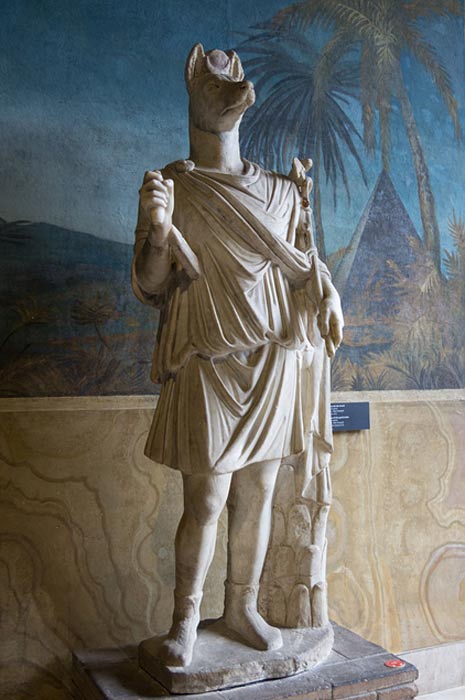
The God with no Temples because he rules the Grave.
He bears the scales to weigh our Heart.
What weighs you down?
Life is about Dreams and Liberation from all that holds you down, you must seek Uplift.
When this is all over your Heart will weigh less than a feather and you'll fly high. This is no lie, so get up.
During the Greek period, he was associated with the god Hermes. The Greeks created a composite deity called Hermanubis as well. They decided to combine Hermes as a messenger of the gods with Anubis who guided the dead to meet them. Over time, Hermanubis became related to Herpokrates in the eyes of the Romans - a popular god for alchemists and philosophers during the Renaissance.
Hermanubis?

The God with no Temples because he rules the Grave.
Anubis was the guardian of all kinds of magical secrets.
He bears the scales to weigh our Heart.
What weighs you down?
Life is about Dreams and Liberation from all that holds you down, you must seek Uplift.
When this is all over your Heart will weigh less than a feather and you'll fly high. This is no lie, so get up.
edit on 6/26/2018 by
muzzleflash because: (no reason given)
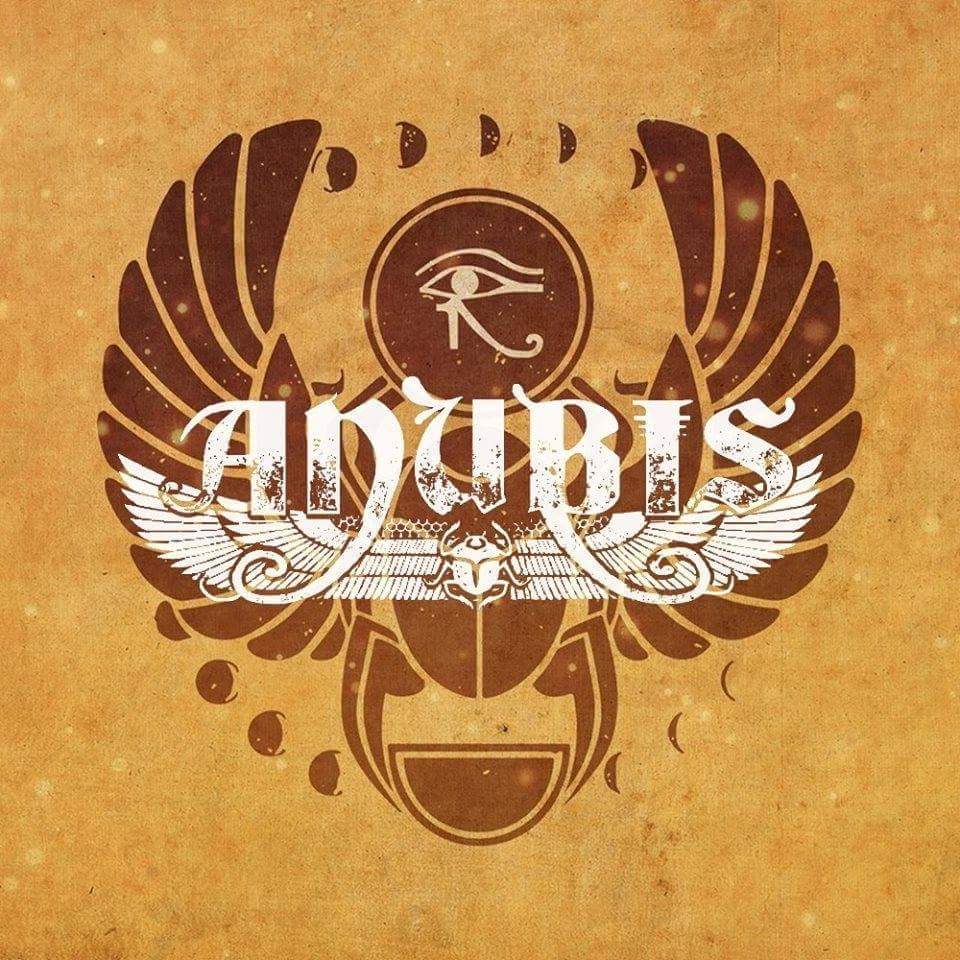
Hermanubis
Hermes' and Anubis's similar responsibilities (they were both conductors of souls) led to the god Hermanubis. He was popular during the period of Roman domination over Egypt. Depicted as having a human body and jackal head, with the sacred caduceus that belonged to the Greek god Hermes, he represented the Egyptian priesthood, engaged in the investigation of truth.[2][3]
The whole "Eye of Anubis" motif is pretty popular these days, it's everywhere.
There's a metal band called that, tv episodes called it, references in books, and even the game Return to Castle Wolfenstein has a stage called Eye of Anubis.
We have a TV show on Nick called House of Anubis that's spawned some spinoff materials...
House of Anubis is a mystery television series developed for Nickelodeon based on the Belgian-Dutch television series Het Huis Anubis.
So what's this all about anyway??
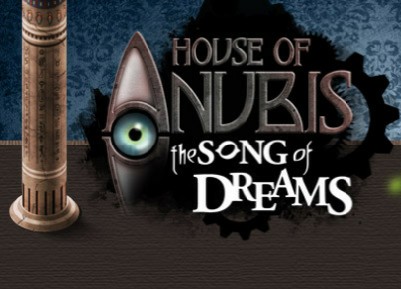
Notice the Eye between the StarTrek chevrons... and I hope you've been looking for AV symbols as I haven't been pointing them out.
That Eye of Anubis is an AV and the hourglass is a VA depending on the style...
This random graphic I found is close...
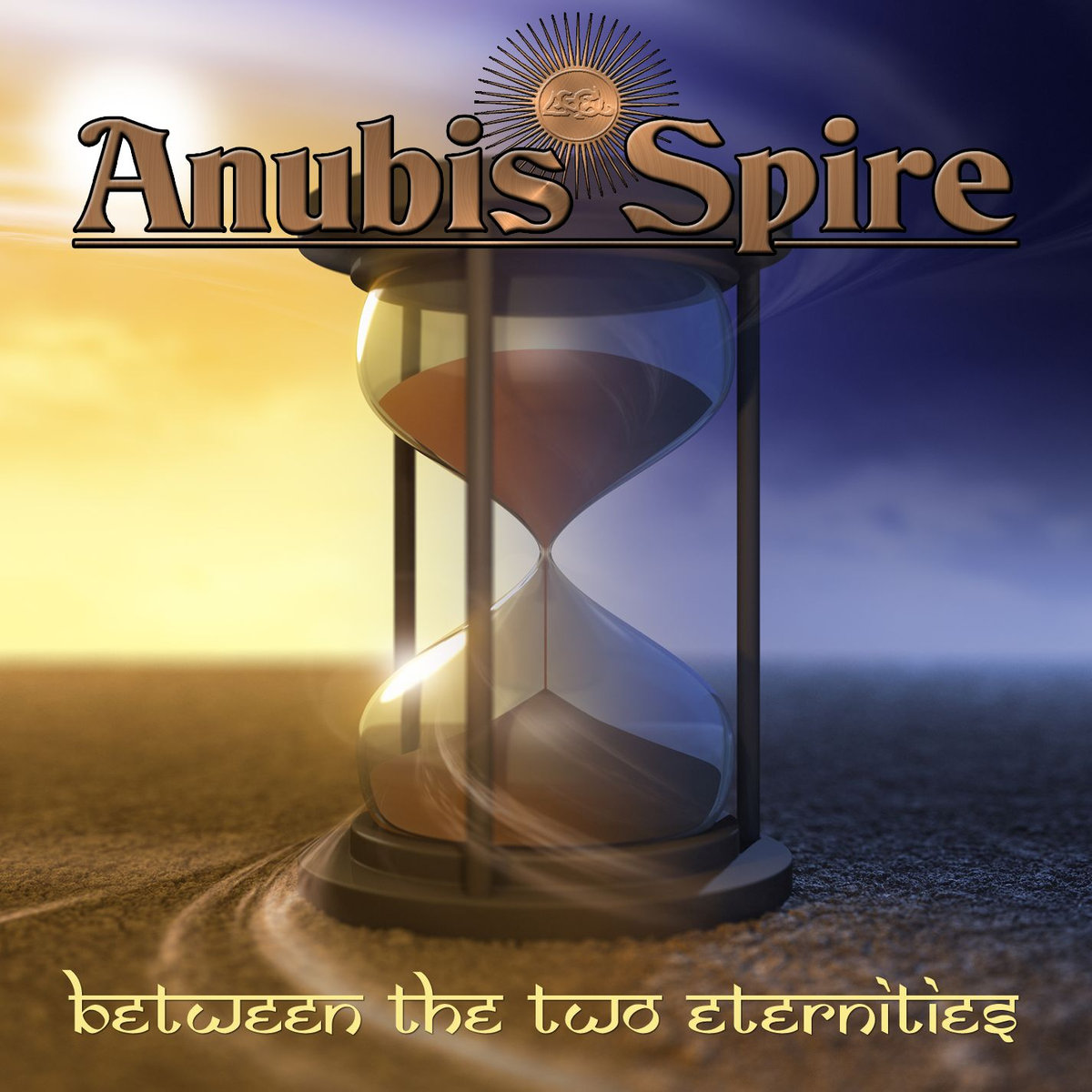
Between the 2 Eternities, hmmm?
I wonder...
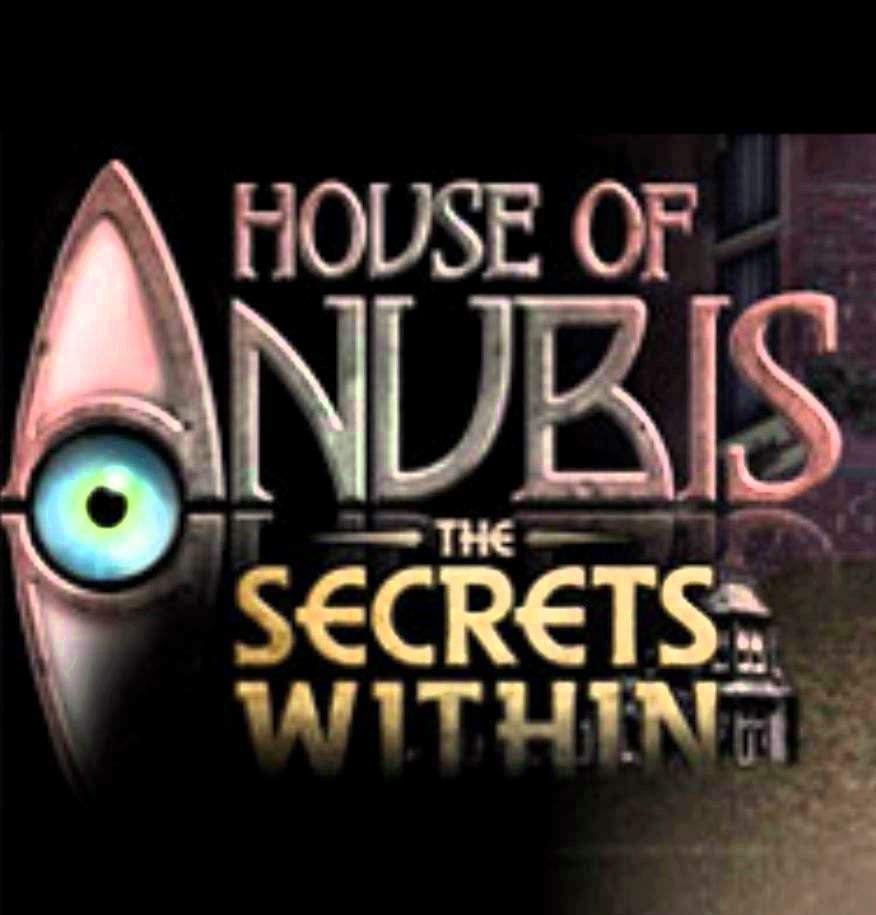
It's time for another riddle...
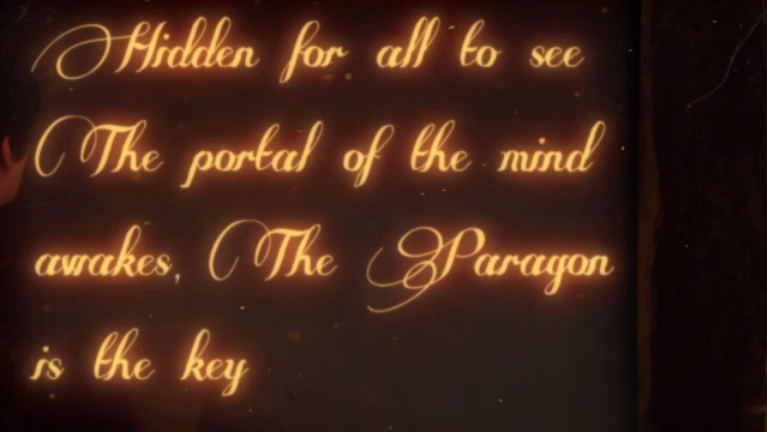
Huh that's weird, in Marvel Comics the "Paragons" a group of Xmen, two of the 7 characters are named Wolfsbane and Wolf Cub. I find that uncanny considering where the riddle originated...
Ok so the Paragon being the key means that striving for perfection or the quintessential quality is the key.
There are thousands of companies named Paragon I'm not even gonna bother looking at logos, lol.
There is a comic character named Maya who becomes Paragon in the Imperfects.
We've got a lot of bands and albums named this, etc.
So back to the mysterious Anubis....

new topics
-
BREAKING: Astrazeneca admits for the first time its vaccine can cause deaths and serious injuries
Medical Issues & Conspiracies: 1 hours ago -
New Bombshell Evidence Strongly Suggests Trump was Set Up in Classified Docs Saga
US Political Madness: 6 hours ago -
One More Night at the Pig and Blanket (Time 2024)
Short Stories: 8 hours ago -
Expert Says Parents Should Ask Babies Permission to Change Nappies.
General Chit Chat: 10 hours ago -
Hard evidence of a Royal plot on the US....if only i had proof.
ATS Skunk Works: 11 hours ago -
Do you name your cars ?
General Chit Chat: 11 hours ago
top topics
-
New Bombshell Evidence Strongly Suggests Trump was Set Up in Classified Docs Saga
US Political Madness: 6 hours ago, 24 flags -
Say his name
US Political Madness: 16 hours ago, 19 flags -
Jim Biden Was in Business with Qatari Officials
US Political Madness: 14 hours ago, 12 flags -
Expert Says Parents Should Ask Babies Permission to Change Nappies.
General Chit Chat: 10 hours ago, 10 flags -
Sleep paralysis and the implantation of some weird Matrix-esque demon creature...
The Gray Area: 15 hours ago, 8 flags -
There is no such thing as moonlight.
General Chit Chat: 17 hours ago, 7 flags -
I may have had a talk with Pope Francis about his plans for our nation
The Gray Area: 14 hours ago, 6 flags -
One More Night at the Pig and Blanket (Time 2024)
Short Stories: 8 hours ago, 5 flags -
Do you name your cars ?
General Chit Chat: 11 hours ago, 4 flags -
BREAKING: Astrazeneca admits for the first time its vaccine can cause deaths and serious injuries
Medical Issues & Conspiracies: 1 hours ago, 3 flags
active topics
-
One More Night at the Pig and Blanket (Time 2024)
Short Stories • 3 • : 19Bones79 -
New Bombshell Evidence Strongly Suggests Trump was Set Up in Classified Docs Saga
US Political Madness • 28 • : charlest2 -
Why Files Our Alien Overlords | How We Secretly Serve The Tall Whites
Aliens and UFOs • 24 • : yuppa -
Definitive 9.11 Pentagon EVIDENCE.
9/11 Conspiracies • 440 • : LaBTop -
Official denial
Diseases and Pandemics • 22 • : Lochid -
Say his name
US Political Madness • 42 • : nugget1 -
It takes One to Be; Two to Tango; Three to Create.
Philosophy and Metaphysics • 9 • : Compendium -
President BIDEN Vows to Make Americans Pay More Federal Taxes in 2025 - Political Suicide.
2024 Elections • 147 • : WeMustCare -
Do you name your cars ?
General Chit Chat • 15 • : visitedbythem -
James O’Keefe: I have evidence that exposes the CIA, and it’s on camera.
Whistle Blowers and Leaked Documents • 31 • : loveguy

